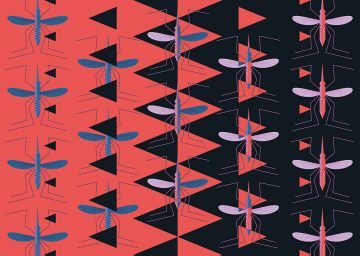Megan Scudellari in Nature:
 Austin Burt and Andrea Crisanti had been trying for eight years to hijack the mosquito genome. They wanted to bypass natural selection and plug in a gene that would mushroom through the population faster than a mutation handed down by the usual process of inheritance. In the back of their minds was a way to prevent malaria by spreading a gene to knock out mosquito populations so that they cannot transmit the disease. Crisanti remembers failing over and over. But finally, in 2011, the two geneticists at Imperial College London got back the DNA results they’d been hoping for: a gene they had inserted into the mosquito genome had radiated through the population, reaching more than 85% of the insects’ descendants1.
Austin Burt and Andrea Crisanti had been trying for eight years to hijack the mosquito genome. They wanted to bypass natural selection and plug in a gene that would mushroom through the population faster than a mutation handed down by the usual process of inheritance. In the back of their minds was a way to prevent malaria by spreading a gene to knock out mosquito populations so that they cannot transmit the disease. Crisanti remembers failing over and over. But finally, in 2011, the two geneticists at Imperial College London got back the DNA results they’d been hoping for: a gene they had inserted into the mosquito genome had radiated through the population, reaching more than 85% of the insects’ descendants1.
It was the first engineered ‘gene drive’: a genetic modification designed to spread through a population at higher-than-normal rates of inheritance. Gene drives have rapidly become a routine technology in some laboratories; scientists can now whip up a drive in months. The technique relies on the gene-editing tool CRISPR and some bits of RNA to alter or silence a specific gene, or insert a new one. In the next generation, the whole drive copies itself onto its partner chromosome so that the genome no longer has the natural version of the chosen gene, and instead has two copies of the gene drive. In this way, the change is passed on to up to 100% of offspring, rather than around 50% (see ‘How gene drives work’).
More here.
